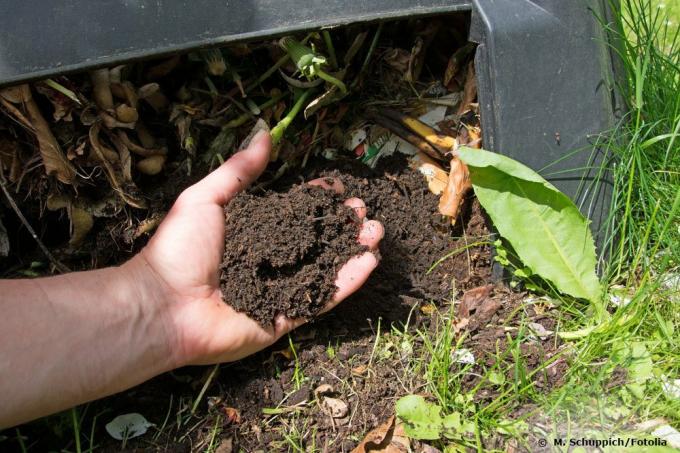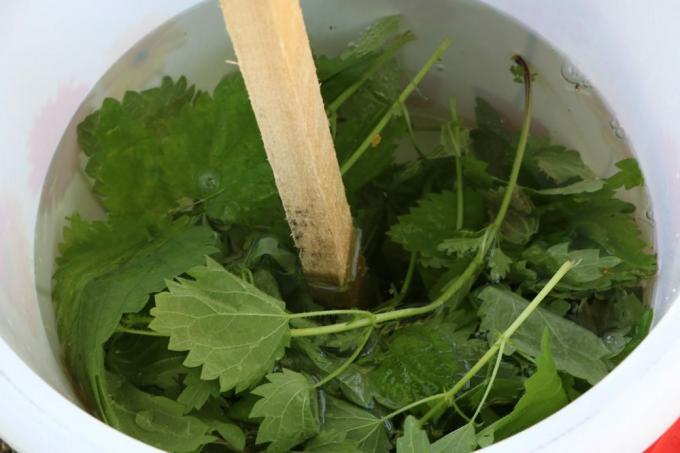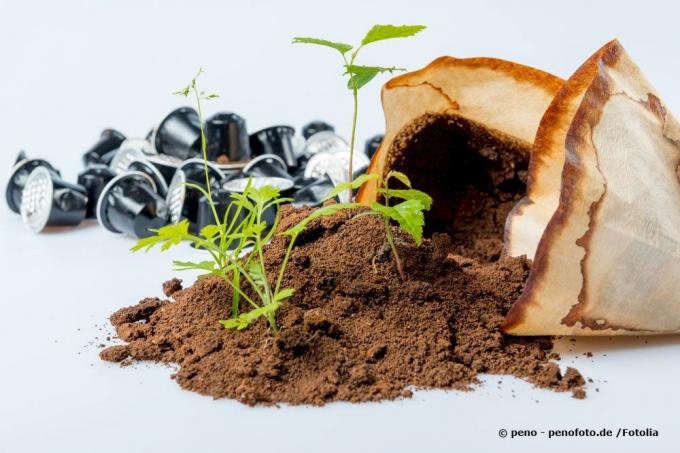
table of contents
- Pour melons
- Time & amount
- Water temperature
- Pour properly
- Fertilize melons
- frequency
- The optimal fertilizer
- compost
- Cow and horse manure
- Horn shavings
- Herbal manure
- Green manure
- Coffee grounds
- Natural fertilizers on sale
Watermelons are a piece of water paired with an incredible taste. Refreshing in summer and low in calories like no other fruit. Sugar melons, on the other hand, are just as sweet as sugar, fragrant and tasty. How much wet do the plants need for the fruits to be big and plump? And which nutrients ensure good taste? These sun worshipers are still rare visitors to our gardens, but their care is not a book with seven seals.
Pour melons
The thirst for water is great
Watermelons and sugar melons require water almost every day because they need a lot of moisture for healthy growth. The watermelon in particular relies on the precious water to live up to its name. The thirst-quenching fruits store these gifts and quickly grow into handsome balls. The gardener can literally watch them. The sunny and warm environment in which the melon likes to stretch out its tendrils, in turn, increases the need for water through increased evaporation.
Time & amount
When and how much pour?
It is poured as needed, and that is almost always given. The hotter the summer, the more often the watering can has to be swung. Watering is even more of a necessity in the greenhouse than outdoors, as the scarce soil there dries out faster.
- The amount of water depends on your needs
- Water more cautiously in cool weather
- Provide daily with water on warm days
- a large jug per plant may be necessary
- the water should penetrate 20 cm
- water in the morning
- More often in autumn, but with smaller quantities
An even, demand-oriented supply of the melon is a decisive factor for the formation of aromatic fruits. An undersupply and oversupply is not necessarily to be seen externally. The loss of quality suffered as a result, however, is clearly visible in the taste.
Water temperature
The ideal wet for Melons
The melon is a warmth-loving plant that resents it if the water supplied gives it a frightening cold. The daily large amount of water must therefore be kept at a good temperature so that it does not cool the soil down too much.
- Water straight from the tap is too cold
- lukewarm irrigation water is ideal
- Use rainwater or stale tap water
Pour properly
The melon wants its daily water exclusively about their roots to take in. The rest of the plant and the surrounding air should be kept dry. Too much moisture on above-ground parts of plants and too humid air promote unpleasant fungal diseases.
- do not use a water hose
- the water splashes everywhere due to the hard jet
- Sprinkler systems are also unsuitable
- only use a watering can
- water near the roots
- leave out the immediate root area
- Do not wet the leaves
- Keep humidity low
tip: Installed drip hoses automatically, optimally and specifically supply the roots of the plants with water, while the rest remains dry.
Fertilize melons
Fertilizing is a necessity
Melons are heavy-eating plants that demand a lot of nutrients from the soil throughout the season. This has to be done so that the supplies do not run out Nutrient depot well filled in the soil before planting out and continuously supplemented. The gardener must therefore stock up on a suitable fertilizer in good time before the start of the season.
frequency
How often do you fertilize?
The first fertilization takes place before the melon plants step into the ground. A large portion of fertilizer is worked into the soil, the nutrients of which ensure that the plants get off to a good start. Depending on the type of fertilization, this sometimes has to happen several weeks before the melon is grown so that microorganisms have enough time to decompose the fertilizer appropriately.
During the rest of the growing season you will need your melon plants weekly fertilize. It is important to ensure that the above-ground parts of the plant do not come into contact with the fertilizer solution.
The optimal fertilizer
Melons need nitrogenous fertilization that keeps the soil pH between 6 and 7. Artificial mineral fertilizers are easy to use, but not necessarily beneficial to the taste of the fruit. You can ripen organic melons in your garden if you fertilize them naturally. All of the nutritional needs can be well over organic fertilizers be covered on an animal or vegetable basis. Every gardener can produce or procure natural fertilizers at low cost.
compost
The ideal fertilizer if you want to naturally supply the soil with nutrients. It is ideal for all plants, including the melon. A good gardener always has it ready because he is constantly composting the plant material.
- good as a first fertilization
- in autumn or early spring
- even during the growing season
- sieved and dissolved in the water

tip: If you don't have your own compost heap, you can still get compost easily. Regional disposal companies compost the contents of the organic bins and dispose of the compost produced cheaply or even free of charge.
Cow and horse manure
Horse manure in particular contains everything that a heavy nutrient consumer can use. Find out where horses are kept appropriately near you. Often the manure is given away for free. It should be well matured before being used in the garden, otherwise it can cause burns to plants.
- is suitable for autumn soil preparation
- even weeks before the start of planting
Horn shavings
For decades, hobby gardeners have naturally fertilized with horn shavings. You are a natural one Slow release fertilizerthat gradually releases its nutrients. This time delay must be planned when feeding the melon. Horn shavings are therefore well suited for enrichment before planting.
Horn meal is finely ground and therefore releases its nutrients faster than horn shavings.
Herbal manure
A healthy lifestyle and organic food are all the rage. More and more gardeners are therefore looking for natural fertilizers for their fruits and vegetables. Well-tried herbal manure is being rediscovered, and rightly so. Many plants are suitable for making nourishing herbal manure. But the best known is certainly that Nettle manurewhich you can make yourself as follows.
1. Pick about 1 kg of fresh nettle leaves and put them in a large bucket, cut up.
2. Add 10 liters of rainwater and some rock flour. This binds the unpleasant odors that arise during fermentation.
3. Cover the opening with a breathable fabric. On the one hand, rising gases can profane, on the other hand none can insects fall into the manure.
4. Leave the bucket outside in a sunny spot for about 2 weeks.
5. Stir the liquid manure daily with a long wooden stick.
6. When no more bubbles rise, the liquid manure is ready.

Immediately before use as a fertilizer, the nettle manure is diluted with water. The mixing ratio is 1:20 for young plants, otherwise 1:10. The liquid manure lasts for several months and can be used weekly.
Green manure
In the year before melons can be grown on the designated cultivation area Green manure to be sown. Butterflies such as lupins and clover are ideal for this. With the help of nodule bacteria, they convert atmospheric nitrogen into nitrate, which in turn can be easily absorbed by plants. The nitrogenous plants are left to stand and simply incorporated into the soil in spring.
Coffee grounds
Coffee is one of the favorite drinks in this country, which is why it is not missing in any household. A valuable fertilizer is also produced during its preparation: coffee grounds. It contains nutrients such as potassium, phosphorus and nitrogen.
- The coffee grounds are sufficient for a few plants
- let it cool down first
- Scatter next to the roots of the melons
- work into the ground
Natural fertilizers on sale
Gardening close to nature is becoming more and more important. The trade follows this trend and now offers numerous fertilizers made from vegetable or animal raw materials such as guano. So if you do not find the time to work yourself in the production of fertilizers, you do not have to resort to artificial products.






